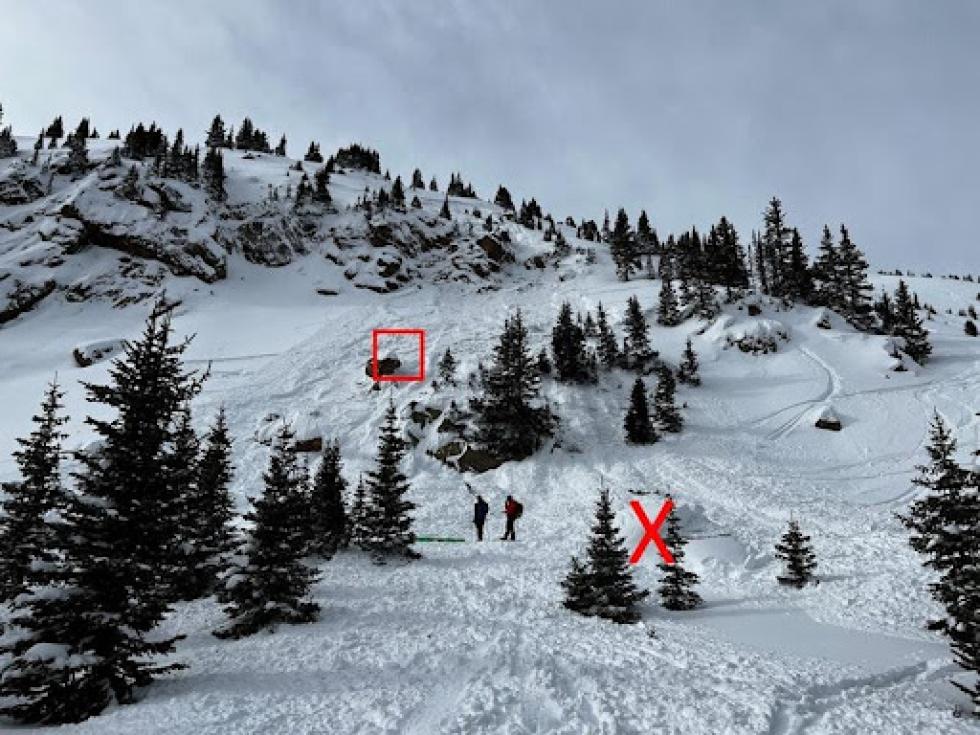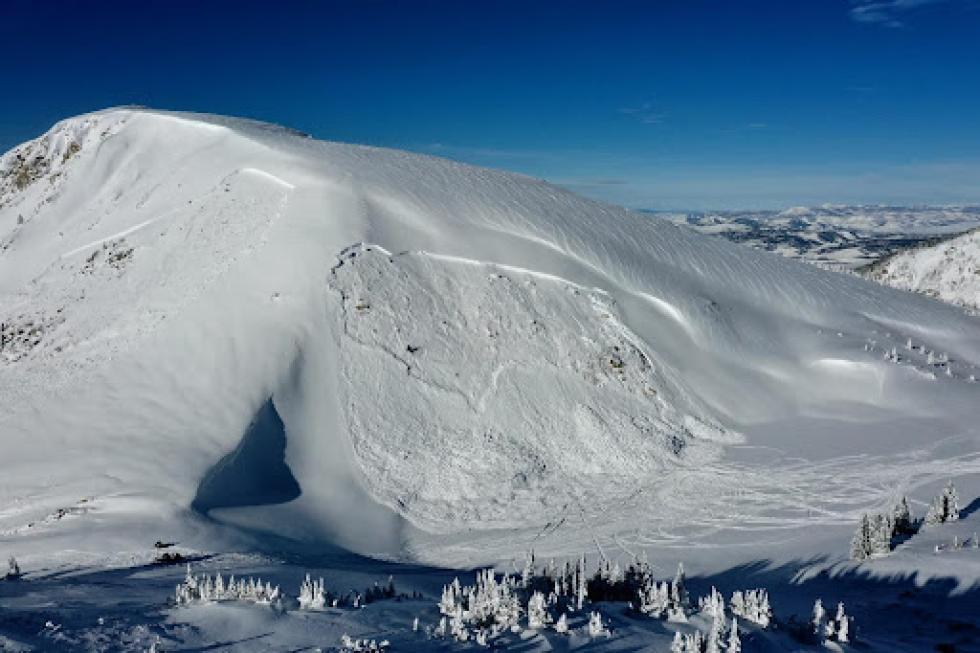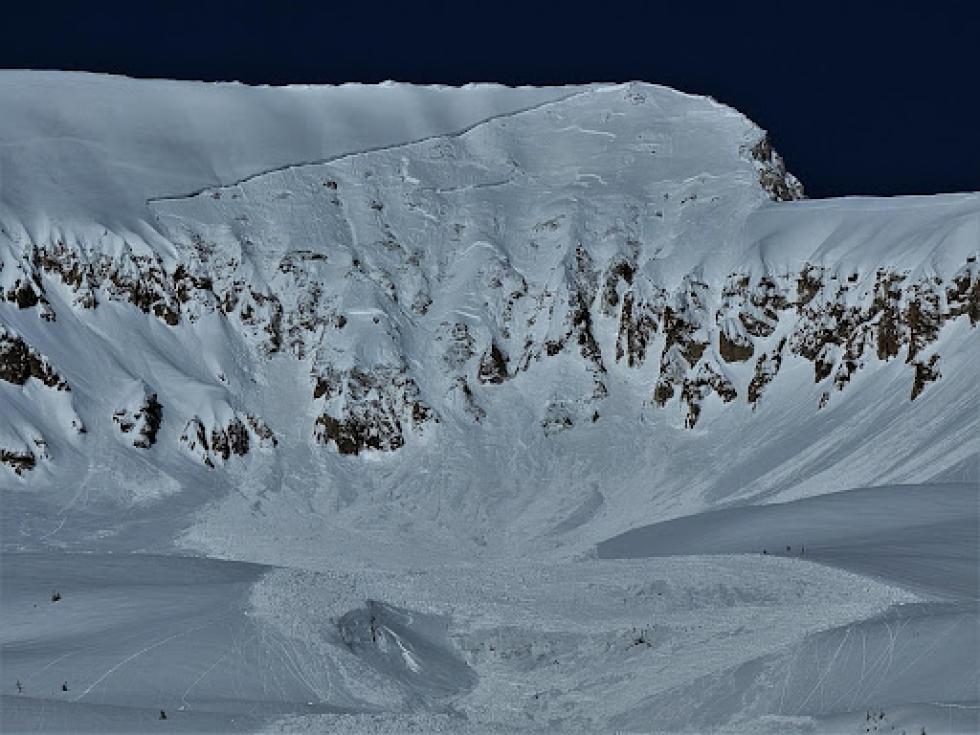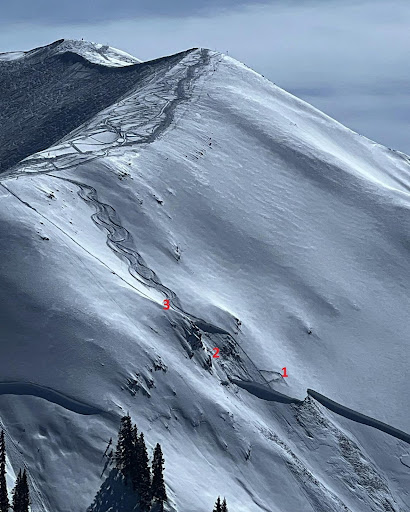2022-23 Season Summary
The 2022-23 season was characterized by abundant snowfall, several potent storm events, and the implementation of a new forecasting platform and product schedule.
There were 5813 avalanches reported to the Colorado Avalanche Information Center (CAIC) during the season. There were 11 avalanche deaths, four more than the annual average over the previous 10 years. We documented 96 incidents (second only to 2018-19) with 122 people caught in avalanches, exceeding the 10-year medians of 56 incidents and 84 people caught. This included 18 avalanches where multiple people were caught, with six of those avalanches resulting in fatalities. Of the 11 total avalanche deaths, there was one roof avalanche fatality, two sidecountry fatalities, and four fatalities involving victims not wearing transceivers.
The season saw ample snowfall for the westernmost mountains and a comparatively drier–though still near or above the long-term average–snowfall for most mountains east of the Continental Divide. The seasonal snowpack began to develop in mid-October with a few healthy storms. On October 27, a skier triggered and was caught in an avalanche near Ashcroft, marking the first incident of the season.
Snowy conditions continued into November before a dry period took hold mid-month. This short-lived dry spell allowed the early snow near the ground to develop into a weak, faceted layer. We saw a few incidents with avalanches breaking on the weak basal snow before the month closed with a potent storm, leading to the season’s first avalanche warnings and one non-critical, partial burial.
Late November storms carried into early December. Light to moderate snowfall continued through the first half of the month before a series of potent storms began just before and carried through the holidays. This “holiday storm” period further accentuated the steep gradient of a deep snowpack on the Western Slope that tapered dramatically east of the Continental Divide. By the end of the month, the accumulated load from the holiday storm overwhelmed the November weak layers, leading to an avalanche cycle producing dozens of larger to very large avalanches, including our first fatal accidents of the season.
On December 26, a family of four triggered and was caught in an avalanche on Berthoud Pass. Other people in this busy location witnessed the slide and initiated a rescue, including one CAIC staff member investigating another skier-triggered avalanche on an adjacent slope. Sadly one member of the family did not survive.

The second fatal accident occurred on December 31 in a backcountry area adjacent to Breckenridge Ski Resort. A father and son exited the ski area through a gate into backcountry terrain where they triggered an avalanche. Both were caught. The father came to rest on the surface but could not locate his son, who was not wearing a transceiver. Organized rescuers later recovered the victim.
The heavy snowfall continued into the New Year, favoring the lagging Southern Mountains. The storm resulted in numerous avalanches with notable highway avalanches on Wolf Creek Pass and US-550. As the weather began to settle down for a short period on January 7 when two snowmobilers were caught, buried, and killed at Pumphouse Lake near Rollins Pass. One snowmobiler was not wearing a transceiver. The snowmobilers were buried in a mix of avalanche debris and open lake water. This location is the site of previous avalanche accidents–the most recent occurred in February 2021.

There were several other incidents, including two partial burials on January 8, before the next storm barreled into the state on January 14. Parts of the southern San Juan Mountains and the Grand Mesa picked up to 4 to 5 inches of snow water equivalent (SWE). The month ended with a significant storm for the Northern Mountains bringing another 4 to 5 inches of SWE and a rash of incidents. From January 27 to 31, five people were caught in five different avalanches, but fortunately nobody was injured.
February brought drier weather and more stable conditions until a significant storm arrived for Valentine’s Day. This led to a spike in large human-triggered and natural avalanches, but fortunately no serious accidents. This was not the case for the next major storm. Between February 23 and 26, 10 avalanches caught 14 people, and three people were killed in two separate accidents on February 25. Two backcountry skiers were caught and killed in a large avalanche near Durango. That same day, a snowmobiler was caught, buried, and killed near La Manga Pass. The snowmobiler was not wearing a transceiver.
Abundant snowfall persisted through most of March. In all but the areas with the shallowest snowpack, the basal persistent layers were no longer the main concern; the avalanche danger was being driven by the storm instabilities and upper-level snowpack weak layers. A powerful atmospheric river moved into the state on March 10, leading to a widespread avalanche cycle on March 11, including many subsequent roof avalanches.
On March 16, a father and two children were moving between a building and a vehicle when they were caught in a roof avalanche. The force of the avalanche threw one child towards the building, where their airway was covered in debris but part of their head was visible (partially buried-critical). The other two were completely buried under two to three feet of avalanche debris. Bystanders and emergency services excavated all three, who were taken to hospital care. Tragically, one child later died from injuries sustained in the avalanche. The CAIC documented four deaths in Colorado and 19 total deaths in the United States due to roof avalanches between the winters of 1993 and 2022, accounting for about 2% of the total avalanche fatalities during this period.
The following day, three backcountry skiers were caught, carried, and buried (two partially buried, not critical, and one fully buried) in a very large avalanche near Marble. Two of the skiers survived through separate and amazing survival stories. One sustained significant head injuries, but stumbled out in a harrowing 12+ hour journey. The other skier self-extricated over the course of 3+ hours, tried to find his companions, and was eventually rescued by search and rescue personnel. Sadly, the third skier was killed.

There was one day off between the run of serious accidents before a sidecountry skier was killed in backcountry terrain adjacent to the Aspen Highland Ski Area. Despite a swift companion rescue, the skier did not survive.

An annotated image showing the location of each member in the three-person group when the avalanche was triggered. Skier 1 stopped and waited in the area indicated by the red "1", and Skier 3 watched from the area marked by the "3". The red "2" marks the location where Skier 2 (the victim) fell and began sliding. The Aspen Highlands Ski Area is visible on the left.
April began with a much-dreaded dust-on-snow event, which quickly consolidated on the snow surface, accelerated meltwater production, and created a crust layer adjacent to the dust. This served as a prominent bed surface for avalanches in the new snow during the second half of the month. We saw 18 people caught in 15 avalanches throughout the month. On April 29, a solo skier was caught and buried on the east side of Bald Mountain, near Breckenridge. Like most avalanches in April, recent storm snow broke shallowly on top of a firm dust-crust. The avalanche ran into a confining gully where it entrained wet snow. Sadly, the skier was buried several feet deep without partners to enact a rescue.
May was a relatively quiet month. The snowpack had seen several big warm-ups and the snowpack was well on its way to a springtime regime. There were no avalanche accidents during the month, and only one vague report mid-month of an incident near Loveland Pass involving three skiers . Decent conditions persisted into June before the dust layer surfaced and became more widespread, bringing a dirty end to our season.
We hope the number of multiple-involvement accidents and number of victims not wearing avalanche transceivers are just anomalies and not the sign of a worrisome trend, though this is the second year in a row with similar patterns.
This season, CAIC made three significant changes to its program. We moved from 10 set forecast zones to dynamic forecast zones with forecasts issued for areas with similar conditions. We transitioned from daily morning forecasts to afternoon forecasts that cover the following two days to help with planning. These changes were launched along with a new website that offers a more stable and mobile-friendly website.
